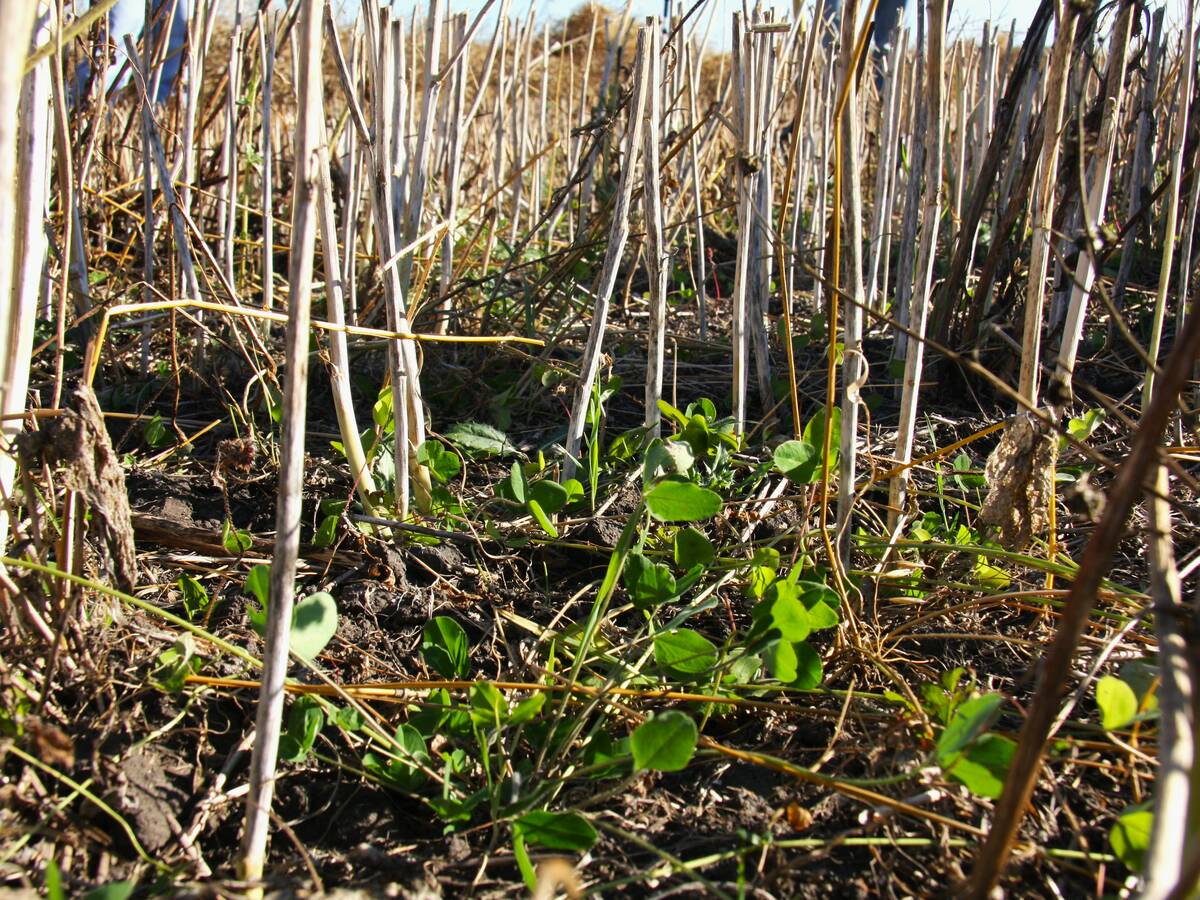Agriculture application researcher Tom Wolf says manufacturers should do a better job building machines that are easier to clean out.
“Why can’t you sell us a sprayer worth $500,000 or more, make clean-out easy and effective and give the customer some sort of assurance that when they’re done the clean-out that the canola is safe,” Wolf said during the CanolaPalooza event in Saskatoon recently.
Adding an additional water pump dedicated to the clean water tank would allow operators to clean out more quickly and effectively by practicing what Wolf dubbed continuous rinsing.
Read Also

Saskatchewan project sees intercrop, cover crop benefit
An Indigenous-led Living Lab has been researching regenerative techniques is encouraging producers to consider incorporating intercrops and cover crops with their rotations.
He said continuous rinsing is a more efficient way of diluting the remainder of the chemical in the sprayer tank.
As with other clean-out methods, growers are encouraged to spray the remainder of their tank in the field.
“Once the pressure goes down in the system and the pump is sucking air, we flick on the clean water pump and now that draws down the clean water,” he said. “It may contain a cleaning solution and it rinses the tank walls, and all the time the solution pump is still running and is drawing that down and pushing it through the booms.”
The remainder of liquid in the tank becomes more diluted in just a few minutes compared to traditional clean-out methods, and operators don’t have to bother performing batch rinses.
Existing sprayers can be retrofitted with a water pump dedicated to the clean water, which is pumped into the tank through the rinse-down nozzles at the top.
However, the additional pump has to be capable of matching the sprayer’s output volume.
“The pump has to be either hydraulically or electrically or air driven, and it depends on the make of the sprayer,” Wolf said.
“The pump has to deliver a volume of water that is very similar to your sprayer output volume, which is somewhere between 20 and 30 gallons per minute, for an average high clearance fast moving sprayer.”
Operators must match the volume of water being pumped into the spray tank and the volume of water being pumped out through the boom so that excessive water won’t accumulate in the tank.
“You want to always be accumulating a little bit and then drawing that down so your pump is sucking air, then not sucking air,” he said.
“It creates these plugs that are actually scrubbing those lines, which is a much better way of cleaning.”
Up to 10 gallons still remain in the sprayer after a sprayer tank is sprayed out.
“The sump, the draw line to the pump that might have some liquid left in it, and then the return line to the back to the tank, the agitation and sparge line: those together contain a total of 10 gallons, let’s say.”.
He said the least efficient method of cleaning a sprayer is to add the entire contents of the clean water tank to the sprayer tank.
“If you add 150 gallons you’ve diluted it by a factor of 16, approximately. If you do three 50 gallon batches, with the same volume, you’ve diluted it by a factor of 216,” he said. “If you were to take the same 150 gallons and just do a continuous rinse, with the same precedent, so the tank is also empty at the beginning, you will be much cleaner in less time.”
He said operators would likely find it useful to keep cleaner in their clean water tank, especially when cleaning out Group 2 chemicals before spraying canola.
“Some guys are concerned that spraying ammonia right onto your crop is harmful, it’s not. Ammonia doesn’t harm crops.”
Ammonia raises the pH level, which is helpful for the DuPont, Dow and Bayer group of Group 2 products. The BASF Group 2 products dissolve better at a lower pH, he said.
















